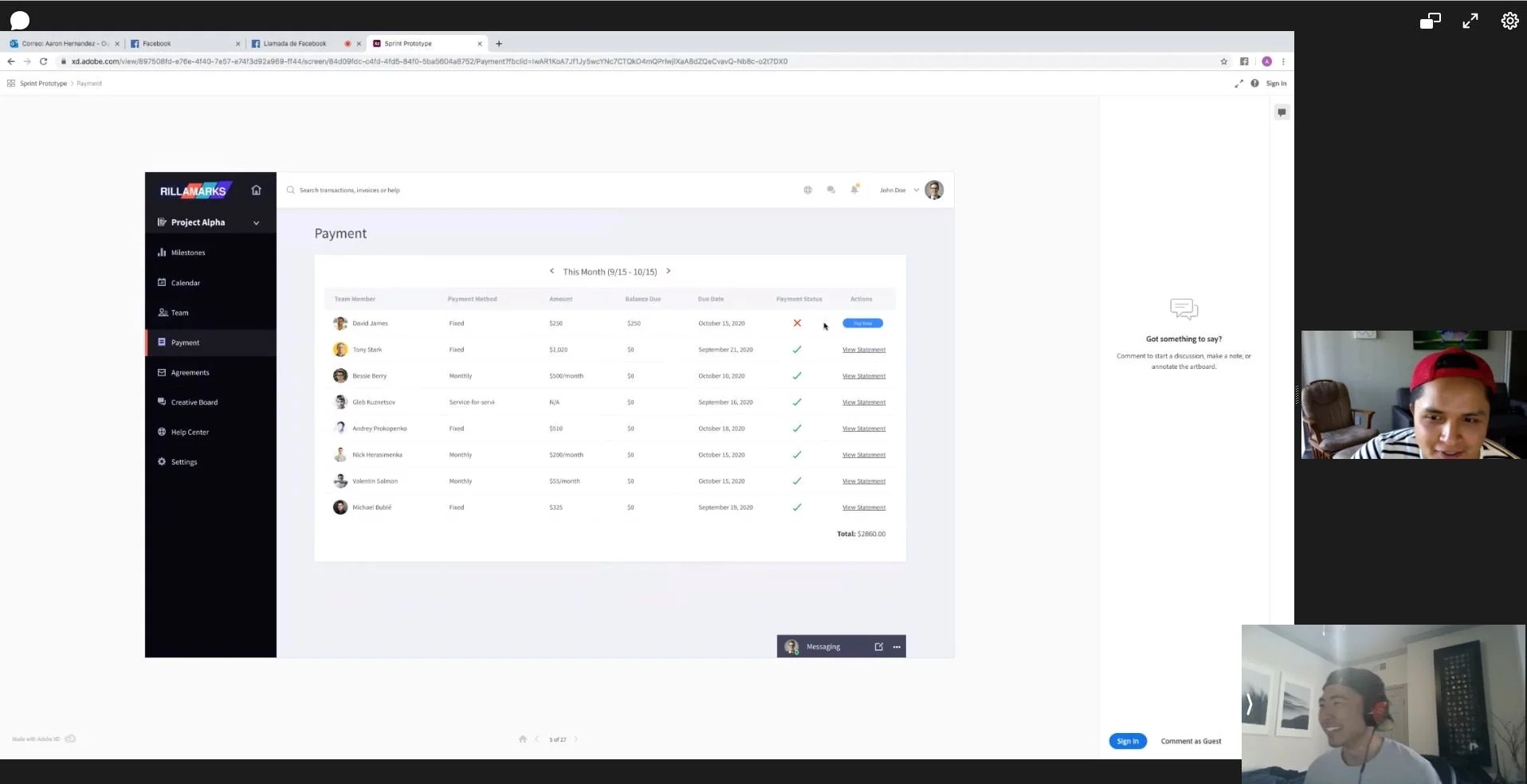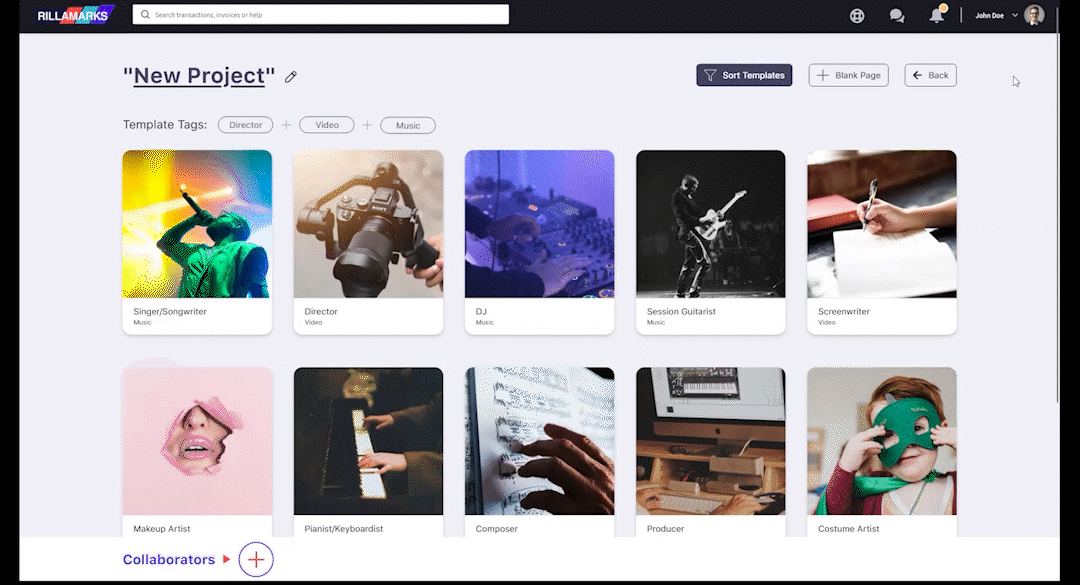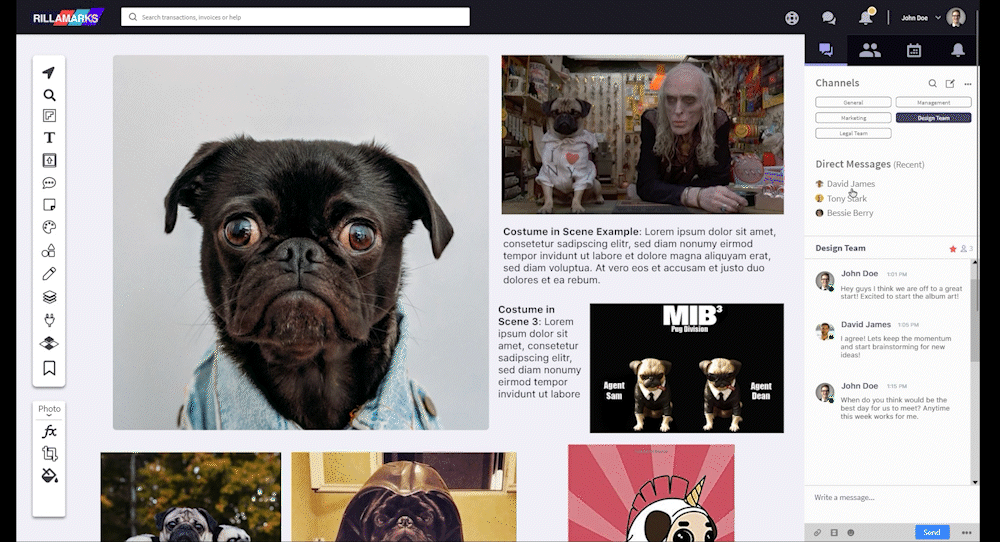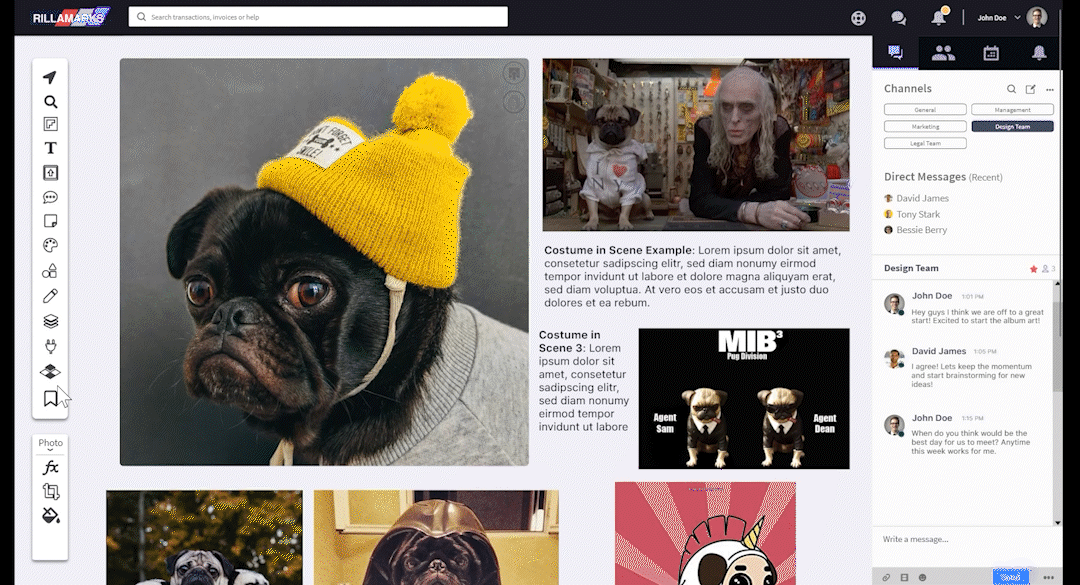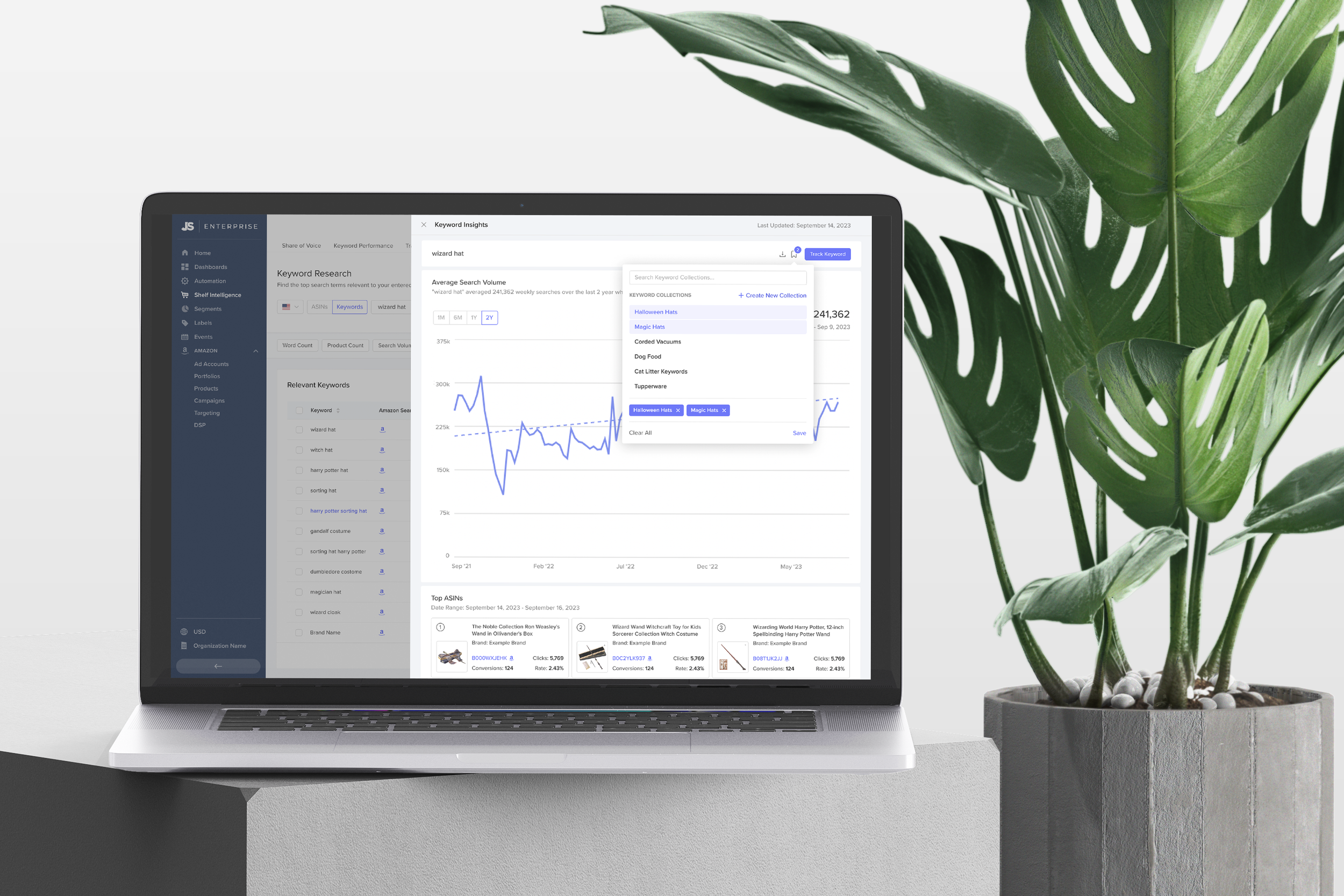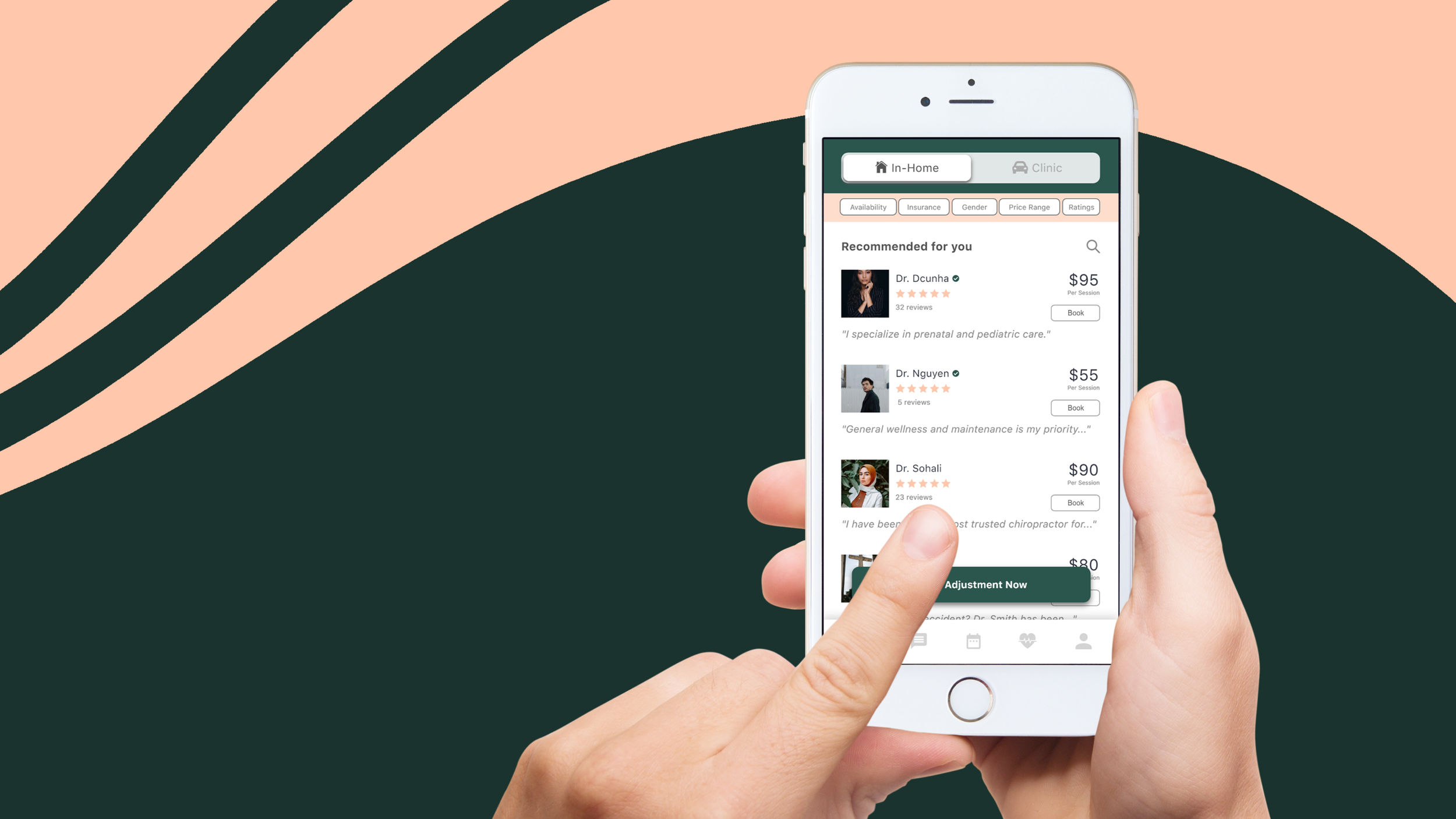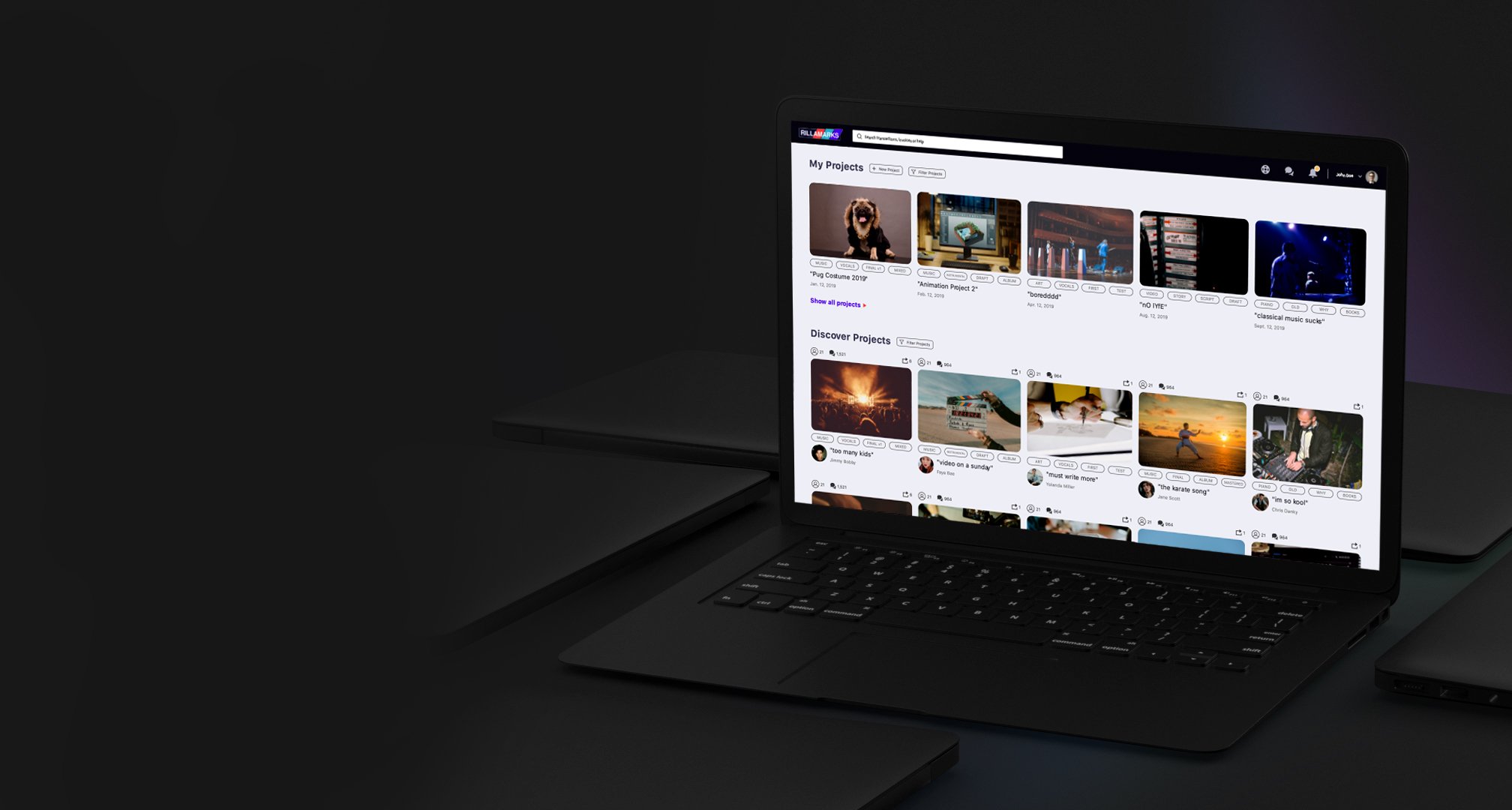
RillaMarks Inc. is a technology platform that aims to provide independent creatives with the tools and services to successfully network, collaborate, and develop their creative projects or career.
Background
With the rise of many advanced yet affordable content creating tools such as the Adobe Suite, Ableton, and Logic Pro X; it has become increasingly more important for independent creators to take charge of their own creative projects and career by collaborating with others to meet common goals.
I was the sole product designer of the founding team.
I joined the startup as a remote product designer working directly with the founder, co-founder, and two developers. I led the product research, implemented UX strategies and design process, and conducted two design sprints during my time at the company. I've been incredibly grateful for the opportunity and have grown immensely throughout my experience.
Project Timeline:
May 2019 - December 2019
Main Focuses:
Research and Design
Design Sprints
MVP Design and Conceptualization
What software was used?
Adobe XD
Adobe Photoshop
Adobe Illustrator
Miro
Defining the Problem Statement
An independent creator needs a way to efficiently collaborate with other creatives to complete their passion projects because they often struggle with networking and establishing adequate project management practices.
Interviewing Session
The founders and I come from a creative background, therefore we understood how frustrating and complex the creative process can be in a remote-based collaborative environment. In order to validate these problems, we set out to interview 10 creative professionals from various industries such as music, design, and art.
Although the music industry is our primary beachhead market, we wanted to widen our research since music production still requires collaboration with many other creative professionals.
Target Audience
After conducting our interviews, we found the following to be among the top frustrations:
Finding the perfect creative team/partner. Scouting for other creatives to build a team together is difficult since it is hard to initially gauge others' strengths and weaknesses, personalities, creative styles, and work ethics. These are all important compatibility factors that can make or break a dream team.
Difficult handling business agreement terms and legalities. Many creatives are uncomfortable when it comes to discussing payment terms and drafting legal contracts that is essential in protecting the interest of both parties. Some even avoid these discussions until much later when it becomes a major issue.
Team miscommunication/disagreements on creative direction. Many creative professionals lead by passion when it comes to the projects they take on. This can lead to misunderstandings and strained relationships when these passionate differing voices clash in collaborative environments.
Lack of streamlined creative process. There is no streamlined process between differing creative professions which makes it a tedious and confusing workflow.
Difficulty in managing project timelines and objectives. Managing a team can be exhausting and stressful, especially when it comes to meeting due dates and milestones.
The Product Vision
As a product, we wanted to position ourselves as the leading creative collaboration platform with 3 key focus areas:
Portfolio Showcase & Networking. We want to help individuals to highlight their greatest achievements, work-in-progresses, or even future project ideas to fully capture a well-rounded portfolio. These would help create a diverse community that can network and collaborate all within the platform.
Project & Team Management. We want to help individuals to successfully manage both their teams and projects with tools such as project milestones, task management, team payments, contract agreements etc.
Collaboration & Project Development. We want to help facilitate a collaborative community where teams can brainstorm together, create mood-boards, share knowledge, quickly share files, critique and provide feedback, etc.
Defining the MVP
Based on our created user flow and storyboard, we identified the following key features to be essential in our MVP:
Portfolio/Project Page Curation. Curate and import your past and current works to showcase to the community. Specify if the project can be viewed publicly, privately, or within your network. Work-in-progress projects can garner public feedback and accept requests for collaboration by others.
Connecting with Others. Network and exchange messages with other users to find potential project collaborators. Users can provide feedback and commentary as spectators on public project pages.
List of Templates. Browse and send out appropriate easy-to-fill legal templates such as collaboration agreements, payment terms, and non-disclosures at the beginning of collaborative projects. Users can also access brainstorming and mind-mapping templates through the creative board to help facilitate new project ideas among the team.
Collaborative Creative Board. Allows users to sketch, brainstorm, upload photos, videos, and music on a digital white-board in real-time in order to bring ideas to life in low-medium fidelity.
Tracking of Development. Users can view their team progress in relation to their goals. Tasks can be prioritized and delegated.
Design Sprint Plans
Based on the popular agile approach in design, we conducted two sets of Design Sprints to help us accelerate our process in order to release our MVP in time for an upcoming SXSW event.
Sprint 1 Prototype
For our Design Sprint Week 1 our team decided to focus on streamlining the most intimidating aspect: managing a new creative team. This would revolve around setting up team milestones, adding new collaborative members, setting up agreements and payment, and accessing the creative board for brainstorming exercises.
User Testing
After completing the first prototype, we conducted 9 usability tests with multiple creative professionals. Based on our gathered feedback, we found the following improvements to focus on for our second Design Week:
Move the Payment & Agreement Tab. When asked to settle payment or agreement tasks, 55% of the users went to the Team tab first. These two functions don't need its own tab and can be absorbed into the Teams section under each member.
Prioritize the Creative Board. Although team management is important, the fun and creative aspect of collaboration isn't yet obvious. We want our users to be able to access the creative board immediately upon startup and push for the boring legal agreements shortly after.
Sidebar Interface. Since the creative board will become the team's new home page, we plan to condense the first prototype's tabs (Chat, Team, Calendar, Notification) into a sidebar instead. This could be expandable at any time for better viewing.
Sprint 2 Sketches
Sprint 2 Prototypes
Project Templates & Adding Collaborators
At the beginning of each new project, users can add their desired team members to collaborate with, as well as their own specific creative role in the new group. Their creative board will then be populated with tools and templates that are specific to their profession, all of which is customizable at any later time.
Team Sidebar
Users can chat, video call, access team member's profiles, check their calendars, milestones, and team notifications all from the sidebar. The side panel can be expandable at any time to cover half of the creative board screen for better visibility.
Bookmark Anything & Everything
Sharing knowledge is critical in a collaborative environment, but can be overwhelming when everyone is sharing information over multiple channels of communication. Our bookmark tab is designed to be an archive of highlighted pieces of information, images, video clips that can be accessible and categorized at any time based on its subject matter.
Creative Board
Teams can collaborate in real-time with an extensive list of basic music editing tools, design tools, and brainstorming templates to help make the creative process more seamless.
Disclaimer:
RillaMark's MVP is still a work in progress at the moment and the above designs are only prototypes from the design sprints we conducted during my time at the company.
Results & Takeaways
Working at an early-stage startup helped me become part of a small but interdependent team. I took on many roles and duties that allowed me to develop my entrepreneurial spirit, while also learning to work with limited resources. Working closely with the founder, co-founder, and developer with an Agile approach helped us determine the structure of the design work that fits in a more cost and time-effective manner. My biggest takeaway from working in a startup is learning to navigate a rather disorganized environment, where I truly learned to take lead and convey my creative vision to the team when needed.




